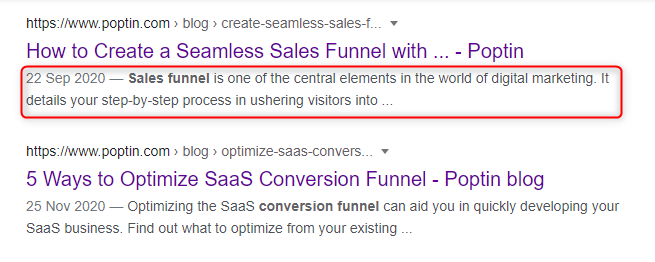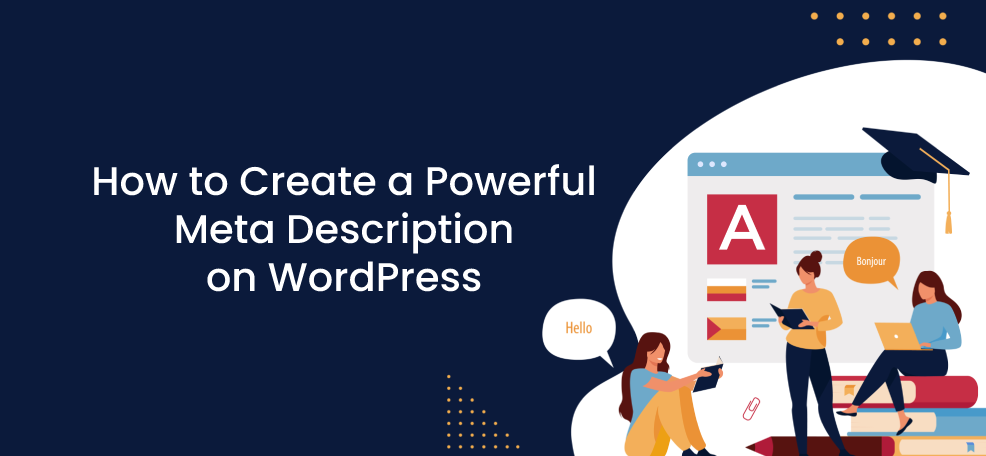You have invested time, energy, and probably some money in creating your WordPress site. Every page has been designed to give visitors and users a grand experience – from your home page through each and every blog post.
But here is the challenge: there are 1,197,982,359 websites in existence as of January 2021. 274.9 million are registered in the United States alone. But we also know that many websites, especially those in e-commerce, are translated into English to attract global customers. (How many items have you ordered from China?)
Even narrowing these numbers down by economic sector, it’s obvious that there is just an “ocean” of competition for any business with a digital presence.
The challenge is obvious – how does your brand stand out enough to show up well in search engine results? Of course, the answer is SEO, and there are just a number of factors involved in getting indexed and ranked well – the popularity of site pages, quality/uniqueness of content, number and quality of inbound links, etc.
One of those factors is the meta description that you have for each of your website landing pages, including each and every blog post.
What is a Meta Description?
When you conduct a Google search, you receive results based upon those factors that we referred to above. But a meta-description always follows the website or page that is listed.
It is a short piece of text the provides more detail about that page to readers, with the goal of showing the value of what they will find by clicking through. And Google considers those very important as it indexes and ranks content pages.

Here’s an example of Google search results, once you get past the ads at the top of the search results page. The search term was “What grass grows well in the shade?”
If you can write a compelling meta description, you are going to get that boost in clicks. And boosts in clicks mean more visitors to your WordPress site. And of course, more visitors translate to more sales.
OK, so how do you write a meta description that is going to compel readers to click through?
Here are 8 tips and tactics.
-
Get to the Point
What is the value of your content? You only have a few words to show this, so think very carefully and stick to being as simple and concise as possible.
You can have a longer description, of course, but it will be cut off, as you can see from the screenshot above. So, get that main point in at the very beginning. Your reader has the right to know exactly what he will find by clicking through to your page.
-
Get the Most Important Keyword in as Close to the Beginning as Possible
In many cases, there may be more than one keyword or a short phrase.
In the case above, the search phrase was the best type of grass for shady areas. Obviously, the keywords here are “grass” and “shady areas.” Identifying those keywords and getting them in early is one of the best SEO tools you can use. Again, focus on the pain points of the consumer, not on how great you are.

-
Be Brief
This goes without saying since you only have a certain number of characters that will actually be shown.
A good general rule is no more than three very short sentences and to shoot for about 150 characters. This is definitely a challenge, but at least get all of the important stuff in those first 150.
But even after the searchers click through and get to the full meta description, it should not be filled with complex terms, lots of descriptive languages, and such. Again, it needs to tell the reader exactly what content you have to provide the solution he seeks.
And of course, you must follow that description with your amazing content, using all of the best practices for content types that engage readers and keep them right there, spending time getting what they need. This “stickiness” is important for SEO.
-
Sometimes a Question Works
Think about the problem your potential customer has.
What kind of a question might grab his attention in your meta description? “Are bare spots under shade bugging you? These grasses and planting solutions may surprise you.”
Now you have identified the problem and inserted the keywords. But you have also intrigued the reader. What might you know that he hasn’t heard about?
Asking a question gets your reader to think and engages him more than just a flat statement will. He’ll want to see all of the solutions you might have and maybe get some new ideas.
-
Stay True to Your Brand Personality
Consider the differences in tone, writing style, and “voice” that brands have. Companies that sell fine jewelry or luxury cars must have a certain tone – sophisticated, serious, and “oozing” of a wealthy lifestyle. Red Bull, on the other hand, is a brand that speaks to adventure and risk and a younger audience.

Every brand has a customer persona. And if that persona has been developed right, then the brand uses a style of writing, vocabulary, and media that “fits” that persona as well as the products or services a brand offers.
And this includes every piece of content your present to your audience, including your meta description.
Who is your customer?
In the case of lawn care, that customer has a broad demographic range – homeowners. And these may be Millennials, Gen X’ers, and Baby Boomers. With such a large demographic, you would have to choose your words and your tone carefully, and this requires some expertise.
If you are unsure of the style and tone of your language, you might want to conduct your own Google search for the best writing services online that have a creative writing department for copywriting needs.
Use the right search terms yourself, and you will certainly find one. Provide the details about your product or service and your audience, and let an expert create that meta description for you.
-
Make Sure Your Page Content Matches that Meta Description
If you successfully entice a searcher to click through to your content, you must be certain that your page content is a perfect match for your meta description. Otherwise, your reader will bounce immediately. If that happens too often, your indexing and rank suffer.
Do not create your meta description until you have crafted the content for that page. It’s sort of like you do not write an introduction to an essay until after it is finished.
Once your content is set and you are pleased with it, then it is time to review it and make decisions about keywords (which of course you have researched) and the main point that will compel your readers to click through.
Once you have that main point, you craft the most creative meta description possible.
-
Always Include a CTA
CTA’s are usually thought of as calls for a reader to do a specific thing – “get your discount now,” “buy one and get another half off,” “download our e-book now,” or “subscribe to our newsletter for regular updates.” But CTA’s can also be much more subtle, and they should be in your meta description.
A few examples might give you some ideas:
- Here’s a fun way to turn your old toilet into a planter
- Don’t waste another dime on spot removers until you read this
- A gourmet dinner in 30 minutes? You bet!
Notice that none of these tell a reader to do something. They are just inviting that reader to click through and get a solution they might be looking for and explaining the value of that click-through.
-
Never Publish a Meta-Description that has Grammar/Spelling Errors
You only look foolish and lacking in the attention to detail that all content writers should have. WordPress has great grammar checker tools to check your grammar, sentence structure, and spelling. Use them.

A meta description that is not perfectly written is a big turn-off to both search engines and to readers. Sometimes it’s the little things that really count.
-
Short, But Critical
Meta descriptions are no substitute for the content that follows them, to be sure. But They are those little pieces of content that can mean the difference between a reader taking notice or moving on. And they will certainly make a difference in how search engines index you.
Take these eight tips seriously. They can make a huge difference.
Author’s Bio:
Donald Fomby is an avid academic assistance consultant for what he believes is the best dissertation writing service. As well, he provides copywriting services for a number of other businesses and has become a bit of a WordPress expert through that work.




